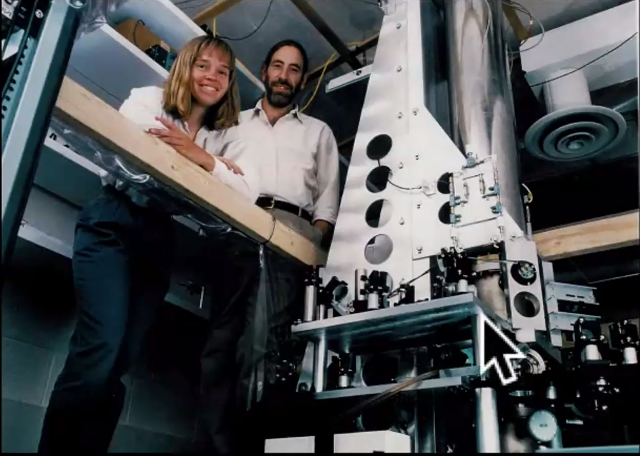Nobel Laureate Bill Phillips at Optica Leadership: Optics and the Quantum Reform of the Metric System
Sammi Bradley, Digital Communications Coordinator, Optica
From marking length in units of a human forearm (the cubit) to counting atomic oscillations to keep time, the way we measure the world around us has evolved in parallel with technological innovation. The metric system, now known as the International System of Units (SI) was established after the French Revolution in an attempt to provide universal standards for weight and length and time.
The SI, which now has seven fundamental units, has come a long way—and how we define each unit is now tied to a fundamental constant of nature. Bill Phillips, 1997 Nobel Laureate in Physics and Optica Honorary Member, known for laser cooling and trapping of atoms, joined the 2024 Optica Leadership Conference and gave a popular talk on measurement standards and how light plays a critical role in modern standards for time, distance, electrical current and more.

The first fountain clock
From antiquity to the 19th century, units of measurement varied from place to place and time to time. French revolutionaries defined the meter: One ten-millionth of the distance from the equator to the North Pole—running through Paris. They made a metal bar to precisely and permanently be a refence for any subsequent meter bar. It would remain the official length standard until a redefinition in 1960 tied the meter to the fundamental value of the speed of light and the duration of a second.
With the SI system came a definition of the kilogram: the mass of one liter of water. Liquid volume is actually quite difficult to fix precisely. In 1875, a platinum-iridium cylinder became the standard reference and would remain so until 2019. In the late 1980s it became apparent that even this carefully preserved metal artifact and its copies were drifting in mass, ever so slightly and would need to be replaced by reference to some fundamental constant of physics. Then, as with the meter, the kilogram was fixed to just such a constant: Planck’s constant and the already-determined second and meter.
The SI second was originally defined as one 86,400th of a day. Tying the second to the day seems like a safe move, but the length of a day varies quite a bit as the moon and tidal forces interact and the Earth’s yearly orbit around the sun changes just slightly. Laser cooling, a technology Phillips pioneered, provided the core technology for cold atomic fountain clocks. Atomic oscillations give an ultraprecise definition of the second, but not a universal one tied to fundamental constants.
And so, Phillips says, the future is optical: The next standard for the measurement of time will likely rely on nuclear transitions rather than atomic transitions and will once again rely on optical techniques.
